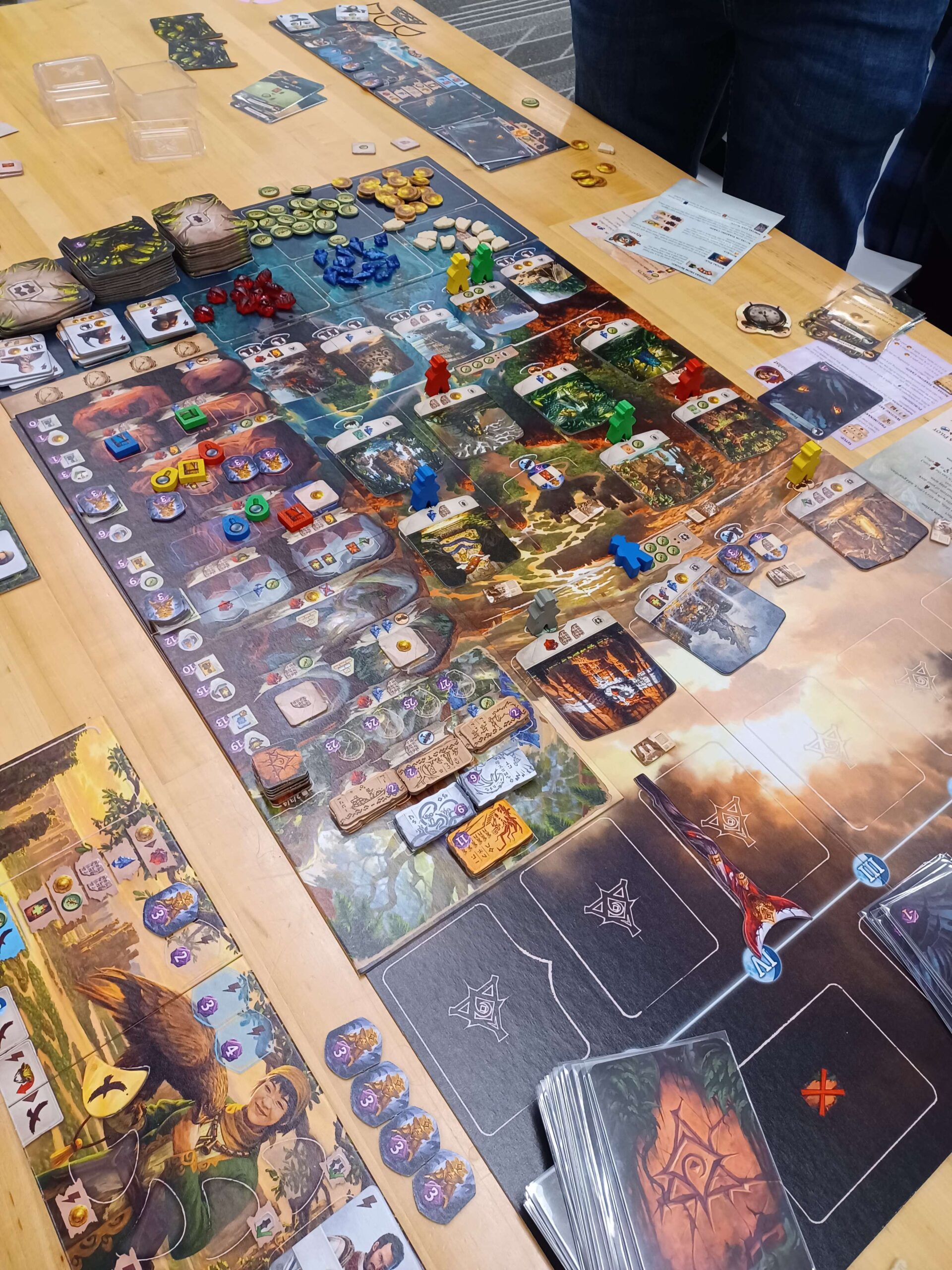Lost Ruins of Arnak: Expedition Leaders is a game that is, on its face, quite daunting to first-time players. As I was sitting down to play it for the first time, I felt sure that I would be in for hours of confusion, being unable to gain my bearings until far into the game. Just looking at all the icons on the game board made my head spin, and with good reason. In the base game, Lost Ruins of Arnak gives players the mechanics to make progress along three different fronts: exploring ruins, progressing the research tree, and deckbuilding, all of which a player needs to manage in tandem in order to progress. In my game, we also used an expansion pack that gave every player a unique character, each with their own additional progression mechanics. Yet, despite my complete unfamiliarity with this complex game, I was able to find my bearings quite quickly. The only turn I felt lost for was my first turn of the game. This is due to two factors: the explanatory icons located all around the board, and my character being designed to have an obviously effective strategy.
In Lost Ruins of Arnak, anytime a player needs to exchange resources for progression—be that buying a card, traveling to a campsite, defeating a guardian, or progressing the research tree—the cost is clearly displayed in icons displayed on or next to the thing the player is acquiring. The same is true of the rewards awarded to a player, which are communicated with resource icons or other icons that indicate more complex rewards. The clear legibility of the costs and benefits of each mechanic allows players to spend less effort trying to understand the rules of the game and spend more effort weighing these costs and benefits to make a strategic play. However, these icons do nothing to prevent the choice paralysis that can set in when players are confronted with so many possible options for what to do on their turn.
Thankfully, the unique character mechanics in the expansion of Lost Ruins of Arnak help to alleviate this issue, quite counterintuitively, by introducing more options for the player. Even though these characters give players more options to choose from, many of these characters are designed to work well with particular strategies. For example, in my game, I played as the Falconer, who becomes more powerful with each guardian she defeats (A guardian appears any time a player visits a ruin for the first time). Rather than being unable to decide whether to explore, research, or buy cards, my character made it clear that I should put most of my effort into exploring new ruins, buy cards that make myself more effective at exploring and defeating guardians, and research when it benefits the prior two goals.
Due to these affordances, an otherwise very complicated game becomes one that new players are able to navigate effectively due to having sufficient information to inform their actions, as well as being given a clear strategy from the outset. I believe that these lessons can be taken from Lost Ruins of Arnak and applied into other games to make first-time games as painless as possible. Designers can attempt to make game rules as apparent as possible from the appearance of the game pieces, as well as provide new players some slight guidance towards an effective strategy before the start of the game.
